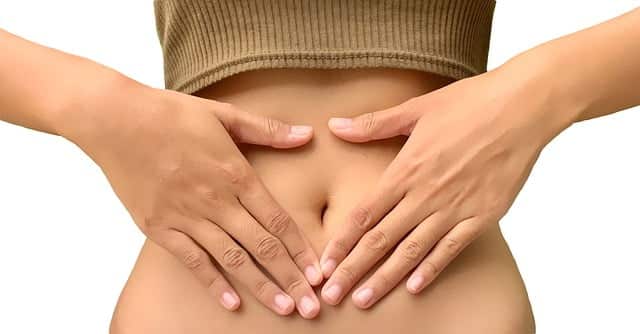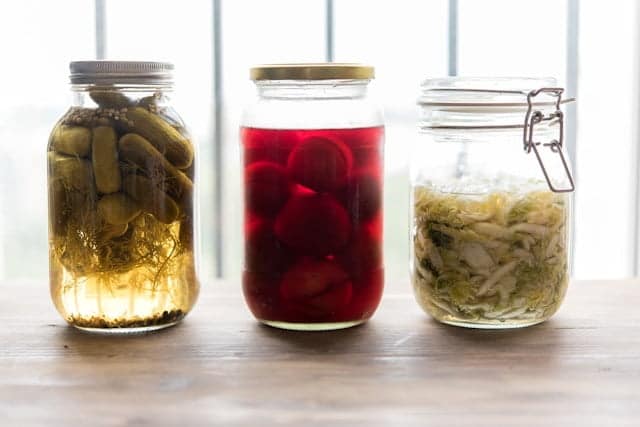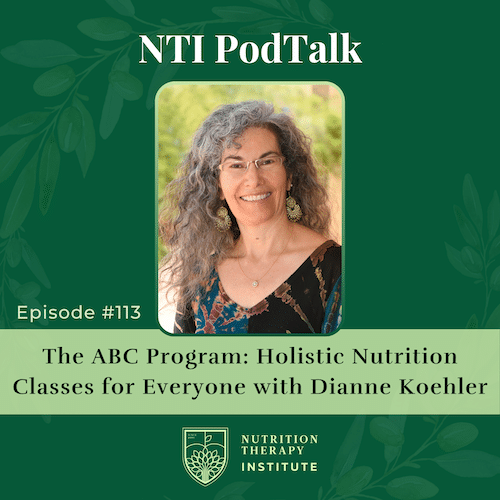
Share this post!
This is part two of a two-part series on prebiotics and probiotics for gut health. In this article, we’ll take a look at how the microbiome functions, what probiotics are, how to incorporate them, and how they improve the gut microbiome.
On its surface, the idea of living organisms in our food and even in our bodies might sound like the things of nightmares. But most of us are now familiar with the benefits of probiotics as part of our diet and possibly in supplements as well.
You may not always think of probiotics as living things but we have to support their growth and population just as we would any beneficial beings. Understanding their benefits, how they work, and the best way to support them, allows us to take full advantage of probiotics and therefore support our gut health.
The Important Role of Gut Bacteria
Whether you are already a Nutrition Therapist Master, an NTI student, a prospective student, or just someone interested in learning about diet and health, you undoubtedly want to know about gut health.
That’s because the microbiome is linked to so much more than just digestion. It also impacts our brain health and mental well-being, as well as our immune system and much more.
We have bacteria living on every surface and in nearly every nook and cranny of our bodies. In fact, the number of foreign organisms living on and within you outnumber your human cells by a factor of 10 to one. This bacteria is beneficial in fighting off a wide range of diseases. Nowhere is this more true than in your gastrointestinal tract, which runs from your mouth to your anus. And a large percentage of that bacteria dwells in your intestines.
The bacteria feed off of what you eat and in turn, it aids in digestion, produces nutrients, fends off pathogens, keeps certain bacteria from taking over, supports neurotransmitters, and affects your endocrine system. Unfortunately, there are a number of ways in which the population of bacteria in the gut can be negatively impacted. These include poor diet, stress and inflammation, medications, and environmental toxins.
Functions of the Microbiome
A closer look at all the roles of the microbiome gives us a glimpse into a powerhouse of health.
Many of the functions of bacteria in our gut stem from their production of short-chain fatty acids (SCFAs). These are produced by the microbiota when they ferment prebiotics, which they use as a fuel source. SCFAs, such as acetate, propionate, and butyrate, which are the ones most commonly found in the body, serve a number of functions and pathways. They help produce ATP (which our bodies use as energy) and keep the junctions between intestinal wall cells tight.
Additionally, they reduce inflammation and can protect against inflammatory bowel disease.
With 80% of our immune system residing in our gut, it’s no wonder the bacteria there can affect our immune response and ability to fight off infection and disease. It does this in a number of ways.
Gut bacteria literally compete with pathogens for space and fuel in our gut. In addition to keeping cell junctions tight, the bacteria also helps regulate the mucosal lining that prevents pathogens from entering the bloodstream. This same bacteria helps metabolize bile for fat digestion, allowing it to be reabsorbed for future use.
Our microbiome also helps our bodies naturally produce nutrients like vitamins K, B12, thiamine, and folate.
And those microbes in our gut aid in the production of neurotransmitters that allow communication between the gut and the brain. This function means that microbiome health can impact mood, cognition and mental health.
Bacteria Versus Probiotics

You may be wondering how gut bacteria and probiotics relate to each other. Probiotics are simply exogenous bacteria: microbiota that originate from outside your body.
Probiotics come in two main forms, from food or drink and as supplements. And although supplementing with probiotics is relatively new, consuming them has been around in some versions for thousands of years.
Although the early days of probiotic foods stemmed from forms of preserving foods to make them last and not from knowledge of microorganisms, nearly every culture around the world has found ways to ferment foods. In fact, the earliest known forms of fermentation date from 10,000 BCE and involved fermenting dairy from camels, goats, and sheep to create yogurt. This progressed into making fermented drinks like wine and mead from fermenting fruits and honey, respectively. Many countries have fermented soy (like miso from Japan), cabbage (like sauerkraut from Germany or kimchi for Korea), yeast into bread (originally in Egypt), cucumbers into pickles (originally in Iraq), tea into kombucha (in China) and much more. Unfortunately, naturally fermented foods are not nearly as common now because of refrigeration and the huge increase in processed foods.
To make matters more confusing, foods that were once created through fermentation can be done through processes that no longer create probiotics. Shelf-stable pickles and sauerkraut easily found in supermarkets are created by adding vinegar and not from fermenting.
Furthermore, probiotics are added to foods that are not fermented but have only been enriched. These still contain probiotics but not in the foods they would naturally occur in.
Supplementing with Probiotics
While holistic nutrition dictates that the goal would be to get nutrients from diet first, there is nothing wrong with supplementing with probiotics. In fact, you can still consume probiotic-rich foods even if you choose to supplement.
Since fewer traditional foods are eaten around the world, supplementing with probiotics can be a way to feed your microbiome easily. And for many people, this can allow them to choose strains of probiotics that target specific health issues such as IBD or are meant to repopulate after treatments like antibiotics, which greatly reduce healthy gut bacteria.
Many probiotic supplements require refrigeration to prevent die-off of the live organisms. And there is some question about how much survives the trip down into the intestines, especially because of stomach acid. Although there are many products, both food and supplements, that advertise CFUs (colony-forming units) in the millions, you really would look for numbers in the billions to have much effect. Tens and hundreds of billions are usually the most effective.
Types of Probiotics
Of the many types of probiotics available, some are better researched and understood in terms of what they are effective for.
The Lactobacillus genus, including L. acidophilus, L. rhamnosus, L. casei and L. plantarum, is found along the vaginal canal so many of us start our lives with it already in our bodies. It can be especially potent against diarrhea and other symptoms related to IBD. It can also combat colic, H. pylori, and ulcerative colitis.
The Bifidobacterium genus, including B. longum and B. breve, can be effective against respiratory infection, sepsis, and certain viruses and can be anti-inflammatory.
Diets rich in probiotic foods are often enough for many people. But supplementation may be necessary in some situations that have caused a depletion in the gut. Many medications can cause a gut imbalance, especially long-term antibiotic treatment. While this means the antibiotics are doing their job of reducing harmful bacteria, they take beneficial bacteria with them. Supplementing with probiotics helps reestablish the beneficial population. Nonsteroidal anti-inflammatory drugs (NSAIDs), proton pump inhibitors (PPIs), antacids, some antidepressants, statins, some sleeping medications, and laxatives are known to affect the balance of bacteria in the gut as well.
Probiotic Safety and Concerns
While probiotic-rich foods are generally considered safe in most cases, anyone with small intestinal bacterial overgrowth (SIBO) should be mindful that they may add to a bacterial imbalance.
In many cases, it is not the probiotics themselves that are the problem but other ingredients or additives in fermented foods. For example, kombucha can be high in sugar and can contain small amounts of caffeine and alcohol. Fermented soy products, when not consumed in moderation, may inhibit nutrient absorption or affect hormone levels.
And even if probiotic-rich foods are beneficial for you, if you do not have much experience with them, they can cause initial bloating when first introduced.
If you are curious about eating more probiotic-rich foods to see if they benefit your digestive and overall health, some great places to start would be this sauerkraut, these miso mashed sweet potatoes, or even these preserved lemons.
Love learning about nutrition and its role in a healthy lifestyle? Interested in making a career out of that curiosity and passion? Nutrition Therapy Institute offers both in-person and online versions of the Nutrition Therapist Master Certification, as well as a hands-on Natural Food Chef program.
About the author: Maya Strausberg earned her Master Nutrition Therapist certification from NTI before starting her nutrition therapy private practice. She now offers writing and editing services for nutritionists and other health practitioners around the world through her business, Family Tree Nutrition.
Images: Image by Alicia Harper from Pixabay; Photo by Anshu A on Unsplash
Share this post!




















